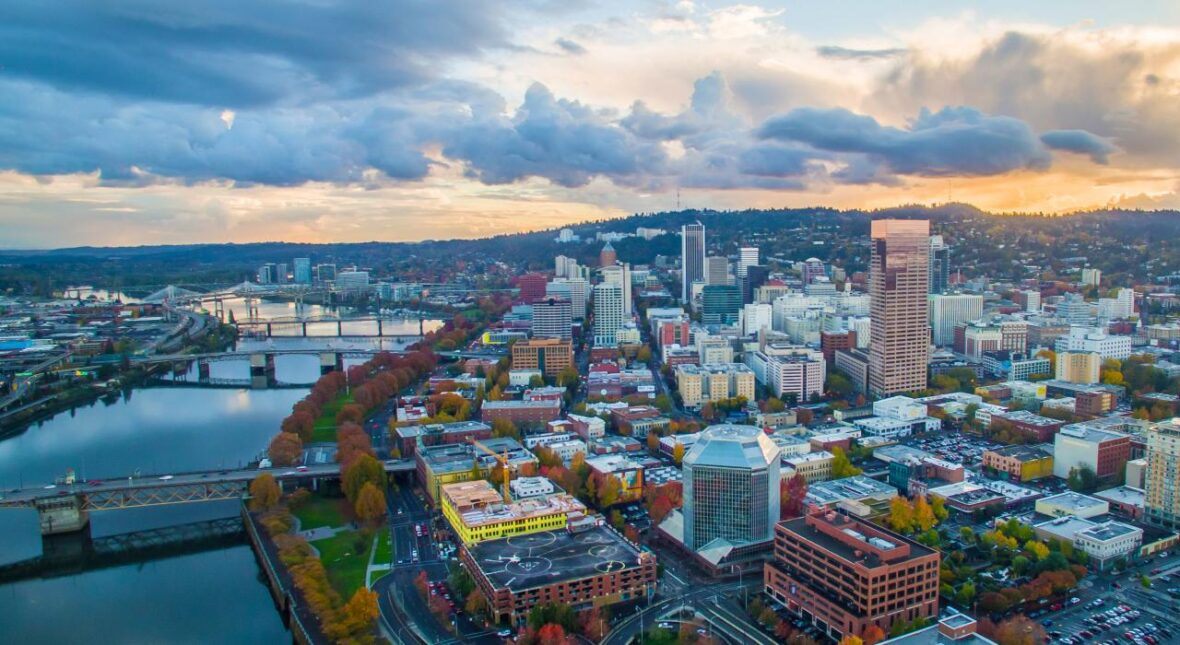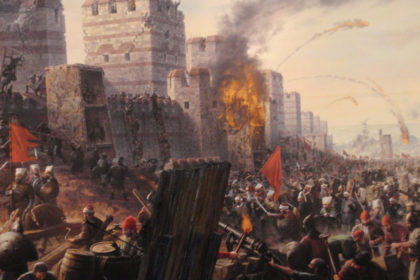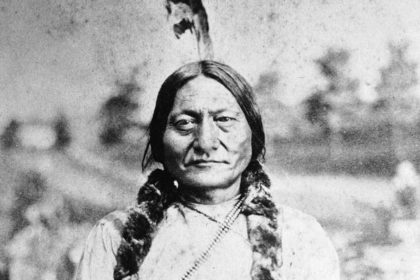Portland is the largest and most populous city in the U.S. state of Oregon and the seat of Multnomah County. It is a major port in the Willamette Valley region of the Pacific Northwest, at the confluence of the Willamette and Columbia rivers in Northwestern Oregon. Take a look below for 25 fascinating and interesting facts about Portland, Oregon, United States.
1. As of 2020, Portland had a population of 652,503, making it the 25th-most populated city in the United States, the sixth-most populous on the West Coast, and the second-most populous in the Pacific Northwest after Seattle.
2. Approximately 2.5 million people live in the Portland metropolitan statistical area (MSA), making it the 25th most populous in the United States.
3. Its combined statistical area (CSA) ranks 19th-largest with a population of around 3.2 million.
4. Approximately 47% of Oregon’s population resides within the Portland metropolitan area.
5. Named after Portland, Maine, the Oregon settlement began to be populated in the 1830s near the end of the Oregon Trail.
6. Its water access provided convenient transportation of goods, and the timber industry was a major force in the city’s early economy.
7. At the turn of the 20th century, the city had a reputation as one of the most dangerous port cities in the world, a hub for organized crime and racketeering.
8. After the city’s economy experienced an industrial boom during World War II, its hard-edged reputation began to dissipate. Beginning in the 1960s, Portland became noted for its growing progressive political values, earning it a reputation as a bastion of counterculture.
9. The city operates with a commission-based government guided by a mayor and four commissioners as well as Metro, the only directly elected metropolitan planning organization in the United States.
10. Its climate is marked by warm, dry summers and cool, rainy winters. This climate is ideal for growing roses, and Portland has been called the “City of Roses” for over a century.
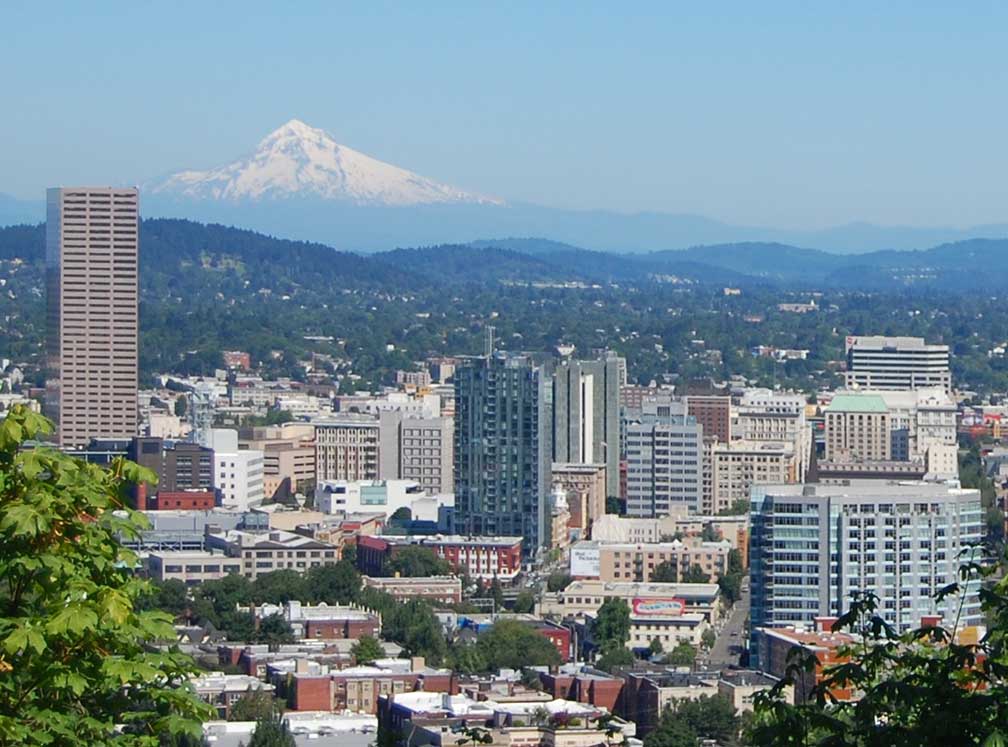
11. During the prehistoric period, the land that would become Portland was flooded after the collapse of glacial dams from Lake Missoula, in what would later become Montana. These massive floods occurred during the last ice age and filled the Willamette Valley with 300 to 400 feet (91 to 122 m) of water.
12. Before American colonizers began arriving in the 1800s, the land was inhabited for many centuries by two bands of indigenous Chinook people – the Multnomah and the Clackamas.
13. The Chinook people occupying the land were first documented in 1805 by Meriwether Lewis and William Clark.
14. Before its European settlement, the Portland Basin of the lower Columbia River and Willamette River valleys had been one of the most densely populated regions on the Pacific Coast.
15. Large numbers of pioneer settlers began arriving in the Willamette Valley in the 1840s via the Oregon Trail, though life was originally centered in nearby Oregon City.
16. A new settlement then emerged ten miles from the mouth of the Willamette River, roughly halfway between Oregon City and Hudson’s Bay Company’s Fort Vancouver. This community was initially referred to as “Stumptown” and “The Clearing” because of the many trees cut down to allow for its growth.
17. In 1843 William Overton saw potential in the new settlement but lacked the funds to file an official land claim. For 25 cents, Overton agreed to share half of the 640-acre (2.6 km2) site with Asa Lovejoy of Boston.
18. In 1845, Overton sold his remaining half of the claim to Francis W. Pettygrove of Portland, Maine. Both Pettygrove and Lovejoy wished to rename “The Clearing” after their respective hometowns (Lovejoy’s being Boston, and Pettygrove’s, Portland).
19. This controversy was settled with a coin toss that Pettygrove won in a series of two out of three tosses, thereby providing Portland with its namesake.
20. The coin used for this decision, now known as the Portland Penny, is on display in the headquarters of the Oregon Historical Society. At the time of its incorporation on February 8, 1851, Portland had over 800 inhabitants, a steam sawmill, a log cabin hotel, and a newspaper, the Weekly Oregonian.
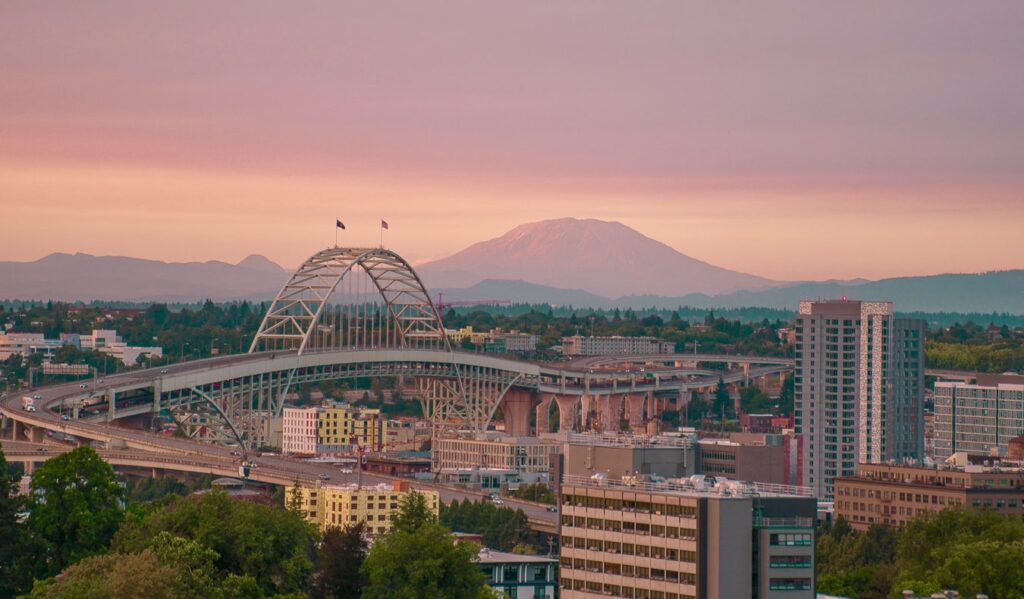
21. A major fire swept through downtown in August 1873, destroying twenty blocks on the west side of the Willamette along Yamhill and Morrison Streets, and causing $1.3 million in damage, roughly equivalent to $28.1 million today.
22. By 1879, the population had grown to 17,500 and by 1890 it had grown to 46,385. In 1888, the city built the first steel bridge built on the West Coast.
23. In 1889, Henry Pittock’s wife Georgiana, established the Portland Rose Society. The movement to make Portland a “Rose City” started as the city was preparing for the 1905 Lewis and Clark Centennial Exposition.
24. Portland’s access to the Pacific Ocean via the Willamette and Columbia rivers, as well as its easy access to the agricultural Tualatin Valley via the “Great Plank Road” (the route of current-day U.S. Route 26), provided the pioneer city with an advantage over other nearby ports, and it grew very quickly.
25. Portland remained the major port in the Pacific Northwest for much of the 19th century, until the 1890s, when Seattle’s deepwater harbor was connected to the rest of the mainland by rail, affording an inland route without the treacherous navigation of the Columbia River. The city had its own Japantown, for one, and the lumber industry also became a prominent economic presence, due to the area’s large population of Douglas fir, western hemlock, red cedar, and big leaf maple trees.

